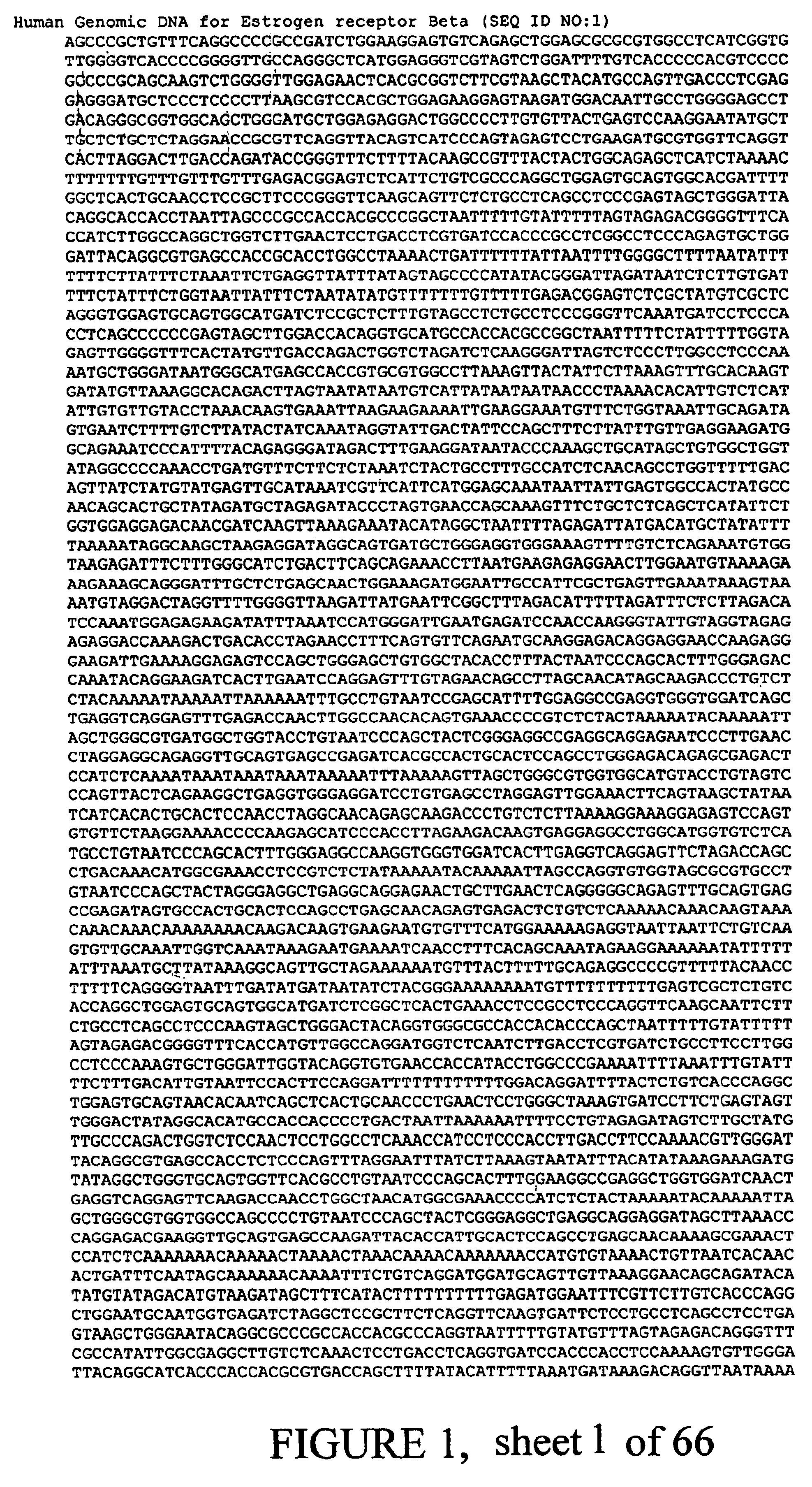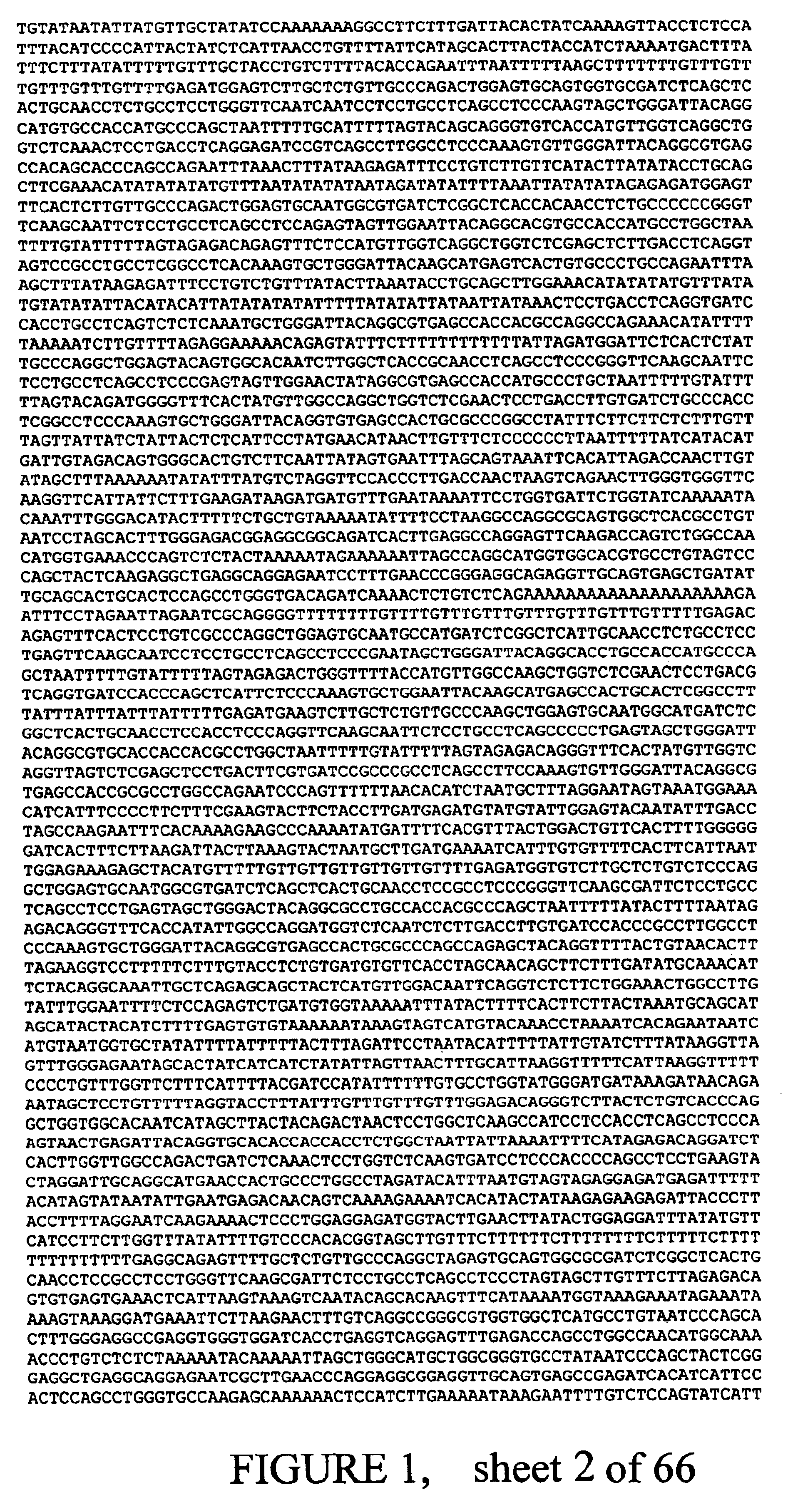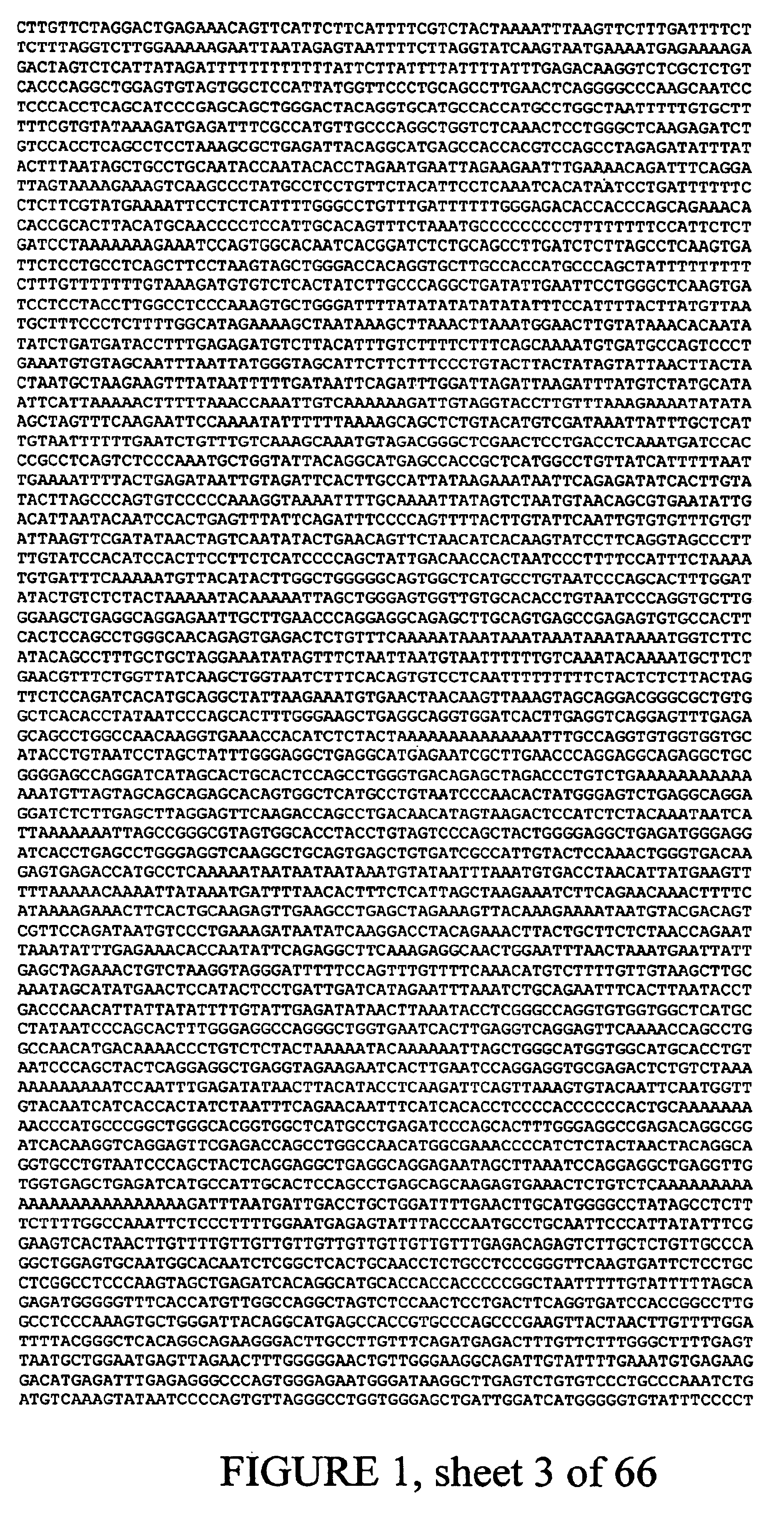Estrogen receptor beta variants and methods of detection thereof
a technology of estrogen receptor and beta variant, which is applied in the field of estrogen receptor beta and nuclear hormone receptor family, can solve the problems of estrogen replacement therapy not being without risks, increasing the risk of breast cancer, and increasing the risk of estrogen replacement by as much as 30%, so as to improve the cardiovascular system, improve the education, and improve the effect of incom
- Summary
- Abstract
- Description
- Claims
- Application Information
AI Technical Summary
Benefits of technology
Problems solved by technology
Method used
Image
Examples
Embodiment Construction
:
SNP Identification and Characterization
The method used to identify SNPs in the ESR-beta gene was sequencing of overlapping ESR-beta PCR products amplified by primers listed below in the tables. Using DNA extracted from the blood and tumors of 48 breast cancer (BC) patients and a Coriell Diversity Panel, PCR was performed to amplify exons--7 through 9 of ESR2, plus approximately 100 bases of each flanking intron. PCR products were sequenced. Sequences for exons--7 to -2 were compared with cDNA sequence from AB06589 and an "assembled" BAC AL161756. Sequences for exons--1 through 9 (FIG. 2) were compared to a BAC sequence representing 101 kb of ESR2 (all but the most 5' and 3' exons known to us), referred to here as Contig64 (FIG. 1), to discover single nucleotide polymorphisms (SNPs). Sequences for exon 10 were compared with an assembled BAC sequence representing all of ER2, referred to as ER2 BAC. PolyPhred version 2.0 (D. A. Nickerson, S. Taylor, N. Kolker, Univ. of Washington, 199...
PUM
| Property | Measurement | Unit |
|---|---|---|
| length | aaaaa | aaaaa |
| nucleic acid | aaaaa | aaaaa |
| density | aaaaa | aaaaa |
Abstract
Description
Claims
Application Information
 Login to View More
Login to View More - R&D
- Intellectual Property
- Life Sciences
- Materials
- Tech Scout
- Unparalleled Data Quality
- Higher Quality Content
- 60% Fewer Hallucinations
Browse by: Latest US Patents, China's latest patents, Technical Efficacy Thesaurus, Application Domain, Technology Topic, Popular Technical Reports.
© 2025 PatSnap. All rights reserved.Legal|Privacy policy|Modern Slavery Act Transparency Statement|Sitemap|About US| Contact US: help@patsnap.com



